The Axon 30 with Under Display Camera: Hands-on Mini-Review
by Andrei Frumusanu on September 3, 2021 9:00 AM EST- Posted in
- Mobile
- Smartphones
- ZTE
- Axon 30
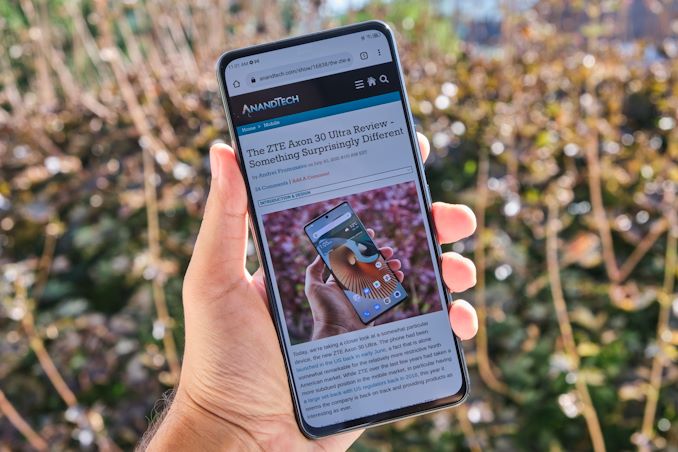
A few weeks ago, ZTE had announced a new device in their flagship line-up, the new Axon 30. The phone is an interesting device for a few reasons: it’s one of the more rare devices this year that opted to use the Snapdragon 870 rather than the newer Snapdragon 888 chip, also pricing itself much more aggressively versus the higher-end Axon 30 Ultra which we reviewed also around a month ago.
What also makes the Axon 30 interesting is the fact that this is now the second-generation under-display camera implementation from ZTE. Although we never had the chance to experience the first-gen Axon 20, we’re now starting to see more vendors attempt to implement the new technology in their new devices, and the Axon 30 is a good opportunity to have a literal closer look at how these under-display cameras work.
| ZTE Axon 30 Series | |||||
| Axon 30 Ultra | Axon 30 | ||||
| SoC | Snapdragon 888 1x Cortex-X1 @ 2.84GHz 3x Cortex-A78 @ 2.42GHz 4x Cortex-A55 @ 1.80GHz Adreno 660 @ 840MHz |
Snapdragon 870 1x Cortex A77 @ 3.2GHz 3x Cortex A77 @ 2.42GHz 4x Cortex A55 @ 1.80GHz Adreno 650 @ ?MHz |
|||
| DRAM | 8/12 GB LPDDR5 | ||||
| Storage | 128/256GB UFS 3.1 | ||||
| Display | 6.67" AMOLED 2400 x 1080 (20:9) 144Hz 300Hz Touch |
6.92" AMOLED 2460 x 1080 (20.5:9) 120Hz 360Hz Touch |
|||
| Size | Height | 161.53 mm | 170.2 mm | ||
| Width | 72.96 mm | 77.8 mm | |||
| Depth | 8.0 mm | 7.8 mm | |||
| Weight | 188 grams | 189 grams | |||
| Battery Capacity | 4600mAh 65W charging (PD3.0) |
4200mAh 65W charging (PD3.0) |
|||
| Wireless Charging | - | - | |||
| Rear Cameras | |||||
| Wide | 64MP IMX686 0.8µm pixels (1.6µm 4:1 16MP) f/1.6 w/OIS 26mm eq. |
64MP IMX686 0.8µm pixels (1.6µm 4:1 16MP) f/1.8 w/OIS 26mm eq. |
|||
| Main | 64MP GW3 0.7µm pixels (1.4µm 4:1 16MP) f/1.9 35mm eq. |
- | |||
| Ultra-wide | 64MP GW3 0.7µm pixels (1.4µm 4:1 16MP) f/2.2 13mm eq. |
8MP f/2.2 13mm eq. |
|||
| Telephoto | 8MP f/3.4 w/OIS (Periscope design) 120mm eq. |
- | |||
| Extra | 5MP Macro 2MP DoF |
||||
| Front Camera | 16MP f/2.5 |
16MP (4MP 2.24µm) f/2.45 |
|||
| I/O | USB-C 3.1 | USB-C 3.0 | |||
| Wireless (local) | 802.11ax WiFi-6E Bluetooth 5.2 LE + NFC |
802.11ax WiFi 6 Bluetooth 5.1 LE + NFC |
|||
| Other Features | Dual Speakers Under-screen optical fingerprint sensor |
Under-screen optical fingerprint sensor | |||
| Dual-SIM | Dual nanoSIM | Dual nanoSIM | |||
| Launch Price | 8+128GB: $749 / £649 / €749 12+256GB: $849 / £739 / €849 |
8+128GB: $499 / €499 12+256GB: $599 / €599 |
|||
The Axon 30 as aforementioned is one of the rare devices this year released with the Snapdragon 870 SoC. As a reminder, the 870 is a higher binned variant of the Snapdragon 865 and 865+, this time increasing the CPU frequency on the fastest Cortex-A77 core to up to 3.2GHz – quite considerably faster than the 2.84GHz of the X1 cores of the Snapdragon 888, and still faster clocked than the 3GHz Snapdragon 888+. Due to the power efficiency regressions or non-progress of the Snapdragon 888’s manufacturing node, the Snapdragon 870 should still be a perfectly viable and competent SoC in a flagship device in 2021.
The device comes in either 8+128 or 12+256GB options, similar to the Axon 30 Ultra. Other device internals of the phone are a bit more conservative versus the Ultra variant, such as the lack of WiFi 6E, only USB 3.0 connectivity, and some notable features lacking such as only a single bottom-firing speaker.
The display is a very large 6.92” AMOLED at 2460 x 1080 resolution. It still features high refresh rate up to 120Hz, but even now increases the touch sampling rate to 360Hz to reduce latency and increase responsiveness.
The phone is extremely large; at 77.8mm width it’s considerably wider than even most “large” devices out there, and definitely dwarfs the Axon 30 Ultra. Because of the quite thin side frame design and curved back glass, as well as the quite thin 7.8mm body, the phone does still manage to have good handling and does feel smaller than what it really is.
The rear of the phone is defined by the camera setup: It’s mostly just a dual-camera device for all practical purposes. The main sensor is the same as on the Axon 30 Ultra, the IMX686 at 64MP resolution which bins down to 16MP 1.6µm in regular shots. The difference here is that the Axon 30 has a smaller f/1.8 aperture optics compared to the Axon 30 Ultra.
Alongside the main camera there’s also a small 8MP ultra-wide unit with f/2.2 optics. There’s also a 5MP macro and a 2MP DoF camera – but these are generally irrelevant for photography in most use-cases. In general, the Axon 30 evidently puts a much lower focus on the camera system than the Axon 30 Ultra.
The phone has one further pratical drawback compared to the Axon 30 Ultra and that is that it’s only featuring a single bottom firing speaker. The Axon 30 Ultra was able to use the earpiece speaker as a stereo unit, and although quality there wasn’t great at least it’s better than just a mono-speaker setup like on the Axon 30.
Naturally, the most interesting aspect of the phone is the fact that it’s one of the very rare devices today with an under-screen camera. While this isn’t ZTE’s first foray into the technology, it’s definitely a much more mature and interesting implementation we’ll be taking a closer look at.
The Axon 30 comes at much cheaper pricing than the Axon 30 Ultra, starting at only $/€499 – which very much puts it well below the usual flagship device price point, so we should adjust our expectations accordingly.


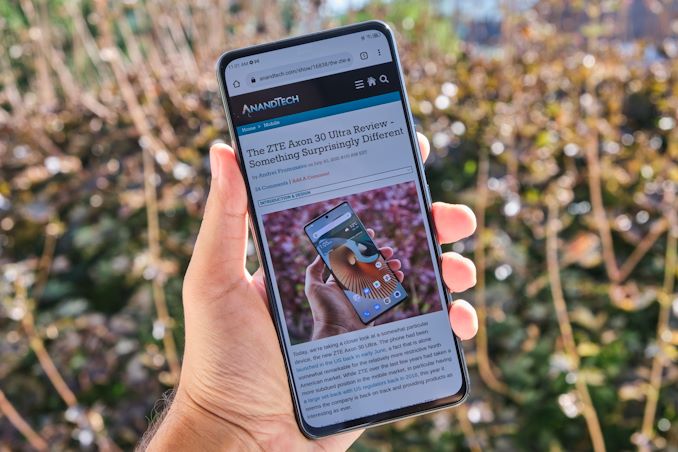
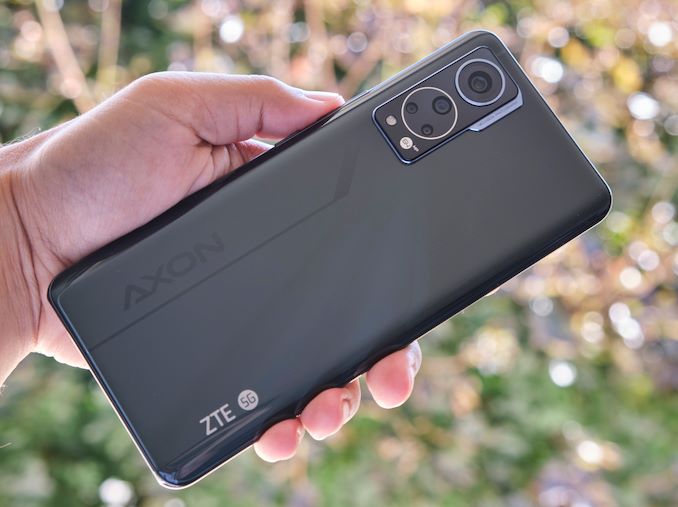
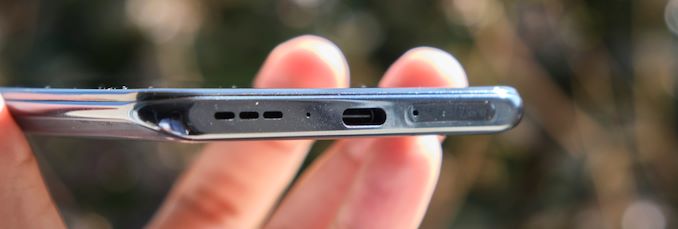
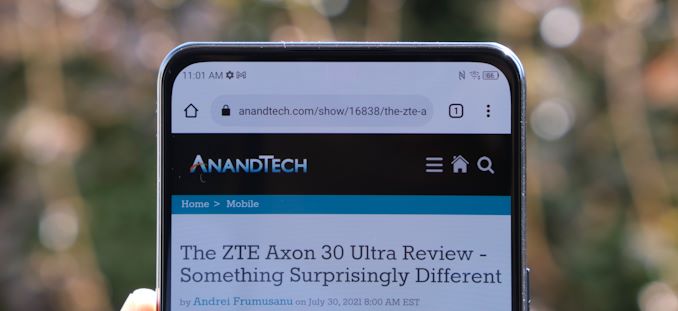








24 Comments
View All Comments
GreenReaper - Friday, September 3, 2021 - link
It seems what is essential to this phone is invisible to the eye... except at an angle.Kangal - Friday, September 3, 2021 - link
The implementation would have been more convincing if the UDC was on the Top-Left Corner. There needs to be some software/OS feature built-in to actually "black out" that section when the Front Camera is in use. Not just for the Stock Camera, but for other Apps like openCamera and Snapchat etc etc. On top of this, I think it requires a slightly better front camera (sharper camera, larger sensor).Portrait mode; the UDC might be hidden by the icons in the notification bar. And when the Notification Bar isn't displayed, that entire section could just be a colour that blends in with the content.
Landscape mode; that corner is mostly un-used. Think of most movies, that section is more like the blindspot. So here, the subtle differences, will also be masked.
Overall, they've done great with the UDC implementation, camera choice, 4MP downsampling, post-processing, and the adequately sharp 1080p display. Can't wait for this to get even better.
Samus - Sunday, September 5, 2021 - link
Kangal took the thoughts out of my brain bone: if they put this in a top corner its much more "transparent" to the user.Either way, the under screen camera implementation is far more impressive than I thought it would be going into the article, and honestly the 4MP output is totally adequate unless you are actually taking selfies with the front camera.
sharath.naik - Monday, September 6, 2021 - link
Why do these manufacturers feel the need to do under display camera? It is at best horrible, NO ONE IS ASKING FOR IT. It is baffling the level of nonsensical decision making that goes into going into this direction. The display cut out is Already small enough to be a nonissue.Round cutouts are that are small enough and in the center are absolutely fine. Even having a small bezel at the top and bottom to accommodate the camera and front Firing speakers are even better. No one is asking for Zero bezel at the top and bottom, let alone an under display camera.
CampGareth - Tuesday, September 7, 2021 - link
"NO ONE IS ASKING FOR IT"Hello, I am a human being and I am asking for under-display cameras. I bought a galaxy fold 3 instead of a 2 for this reason. I like big uninterrupted displays but a camera is still useful for video calls, face unlock and the occasional selfie. I would accept a motorised pop-out camera but that takes up more space than a UDC, space which I would rather use for batteries. I would love to have UDCs on my laptops in exchange for slimmer bezels leading to smaller laptops for a given screen size or more screen for a device size.
Speak for yourself not for others, we all have different opinions.
Tams80 - Tuesday, September 7, 2021 - link
You want slimmer bezels on your laptops...Sorry, but that alone makes your opinion silly.
Tams80 - Tuesday, September 7, 2021 - link
I'm only interested if the camera is going to be placed in or near the middle of the display. That would be innovative and useful (if still poor image quality).But otherwise, yeah, just use a damn bezel.
shabby - Friday, September 3, 2021 - link
Surprised the udc area ppi is identical to the main screen, Samsung's implementation has 10 year old ppi in that section, how are they so far behind?Fulljack - Saturday, September 4, 2021 - link
Samsung uses foldable display which adds complexity.Samus - Sunday, September 5, 2021 - link
Samsung also used previous gen tech. Even the recently launched Z Fold 3 uses a 4MP front camera (the actual sensor is 4MP, not just capturing at 4MP like this one.)This phone appears a generation ahead on UDC technology.